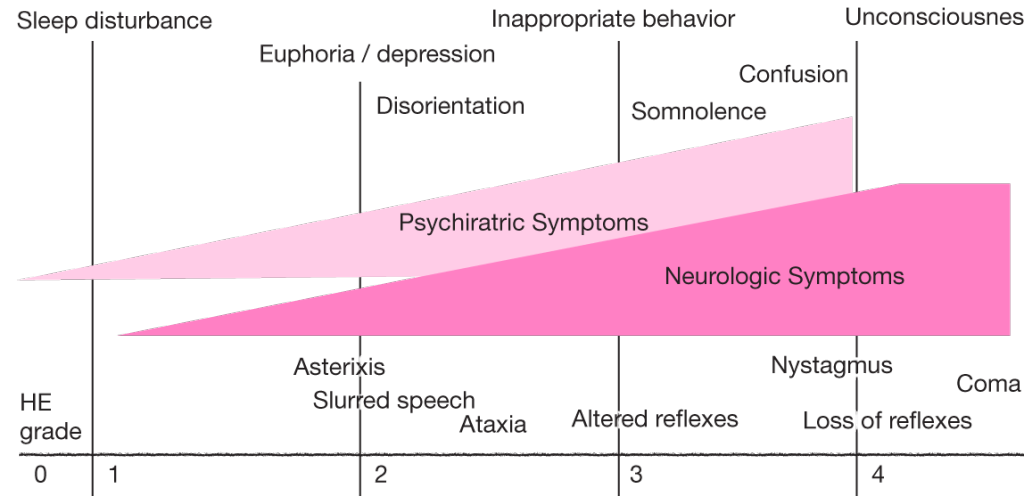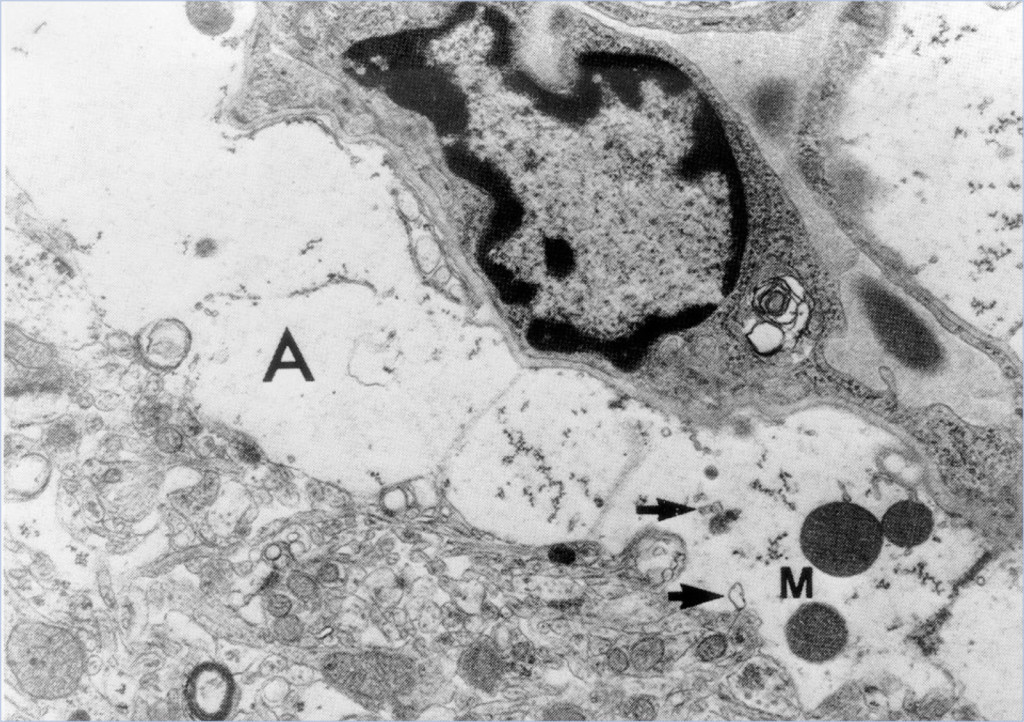Hepa-Merz® – Summary of prescribing information
Hepa-Merz® Granules. Composition: One sachet with 5 g of Granules contains: Active substance: 3 g L-ornithine- L-aspartate. Excipients: citric acid, aspartame (E951), povidone 25, fructose, flavorings, orange yellow S (E110). Note for diabetics: One sachet of Hepa-Merz® Granules contains 1.13 g of fructose (corresponds to approx. 0.11 BU). Therapeutic indications: Treatment of concomitant disease and sequelae due to impaired detoxification activity (e.g. in cirrhosis of the liver) with the symptoms of latent and manifest hepatic encephalopathy. Contraindications: Absolute: Hypersensitivity to L-ornithine-L-aspartate, orange yellow S or any of the other excipients. Severely impaired renal function (renal insufficiency). A serum creatinine value over 3 mg/100 ml can be used as a guideline value. Relative: Pregnancy and lactation: No clinical data are available relating to intake of Hepa-Merz® Granules in children and during pregnancy. No exhaustive animal studies have been performed for L-ornithine-L-aspartate, to investigate its toxicity in relation to reproduction. Administration of Hepa-Merz® Granules during pregnancy should therefore be avoided. If, however, treatment with Hepa-Merz® Granules is considered necessary, careful consideration should be given to the benefit versus risk ratio. It is not known whether L-ornithine-L-aspartate is excreted into the breast milk. Administration of Hepa-Merz® Granules should therefore be avoided during lactation. If, however, treatment with Hepa-Merz® Granules is considered necessary, careful consideration should be given to the benefit versus risk ratio. No data regarding fertility. Undesirable effects: Uncommon (³ 1/1,000 to < 1/100): Nausea, vomiting, stomach ache, flatulence, diarrhea. Very rare (< 1/10,000): Pain in the limbs. These undesirable effects are usually transient and do not require withdrawal of the medicine. Orange yellow S (E110) can trigger allergic reactions. Warnings: Hepa-Merz® Granules contain fructose. Patients with rare hereditary problems of fructose intolerance should not take this medicine. Aspartame (E951): Contains a source of phenylalanine. May be harmful for people with phenylketonuria. Further precautions: As a result of the disease, the ability to drive and operate machinery may be impaired during treatment with L-ornithine-L-aspartate.
Hepa-Merz® Granules. Composition: One sachet with 5 g of Granules contains: Active substance: 3 g L-ornithine- L-aspartate. Excipients: citric acid, saccharin sodium, sodium cyclamate, povidone 25, fructose, flavorings, orange yellow S (E110). Note for diabetics: One sachet of Hepa-Merz® Granules contains 1.13 g of fructose (corresponds to approx. 0.11 BU). Therapeutic indications: Treatment of concomitant disease and sequelae due to impaired detoxification activity (e.g. in cirrhosis of the liver) with the symptoms of latent and manifest hepatic encephalopathy. Contraindications: Absolute: Hypersensitivity to L-ornithine-L-aspartate, orange yellow S or any of the other excipients. Severely impaired renal function (renal insufficiency). A serum creatinine value over 3 mg/100 ml can be used as a guideline value. Relative: Pregnancy and lactation: No clinical data are available relating to intake of Hepa-Merz® Granules in children and during pregnancy. No exhaustive animal studies have been performed for L-ornithine-L-aspartate, to investigate its toxicity in relation to reproduction. Administration of Hepa-Merz® Granules during pregnancy should therefore be avoided. If, however, treatment with Hepa-Merz® Granules is considered necessary, careful consideration should be given to the benefit versus risk ratio. It is not known whether L-ornithine-L-aspartate is excreted into the breast milk. Administration of Hepa-Merz® Granules should therefore be avoided during lactation. If, however, treatment with Hepa-Merz® Granules is considered necessary, careful consideration should be given to the benefit versus risk ratio. No data regarding fertility. Undesirable effects: Uncommon (³ 1/1,000 to < 1/100): Nausea, vomiting, stomach ache, flatulence, diarrhea. Very rare (< 1/10,000): Pain in the limbs. These undesirable effects are usually transient and do not require withdrawal of the medicine. Orange yellow S (E110) can trigger allergic reactions. Warnings : Hepa-Merz® Granules contain fructose. Patients with rare hereditary problems of fructose intolerance should not take this medicine. Further precautions: As a result of the disease, the ability to drive and operate machinery may be impaired during treatment with L-ornithine-L-aspartate.
Hepa-Merz® Infusion concentrate. Composition: One ampoule of 10 ml contains: Active substance: 5 g L-ornithine-L-aspartate. Excipients: Water for injections. Therapeutic indications: Latent and manifest hepatic encephalopathy. Contraindications: Absolute: Hypersensitivity to L-ornithine-L-aspartate. Severe renal impairment (renal failure). A serum creatinine level in excess of 3 mg/100 ml can be taken as a guide. Relative: Pregnancy and lactation: There are no clinical data available on the use of Hepa-Merz® Infusion concentrate in children and during pregnancy. L-ornithine L-aspartate has been investigated for reproduction toxicity only to a limited extent in experimental animal studies. The administration of Hepa-Merz® Infusion concentrate in pregnancy should therefore be avoided. If treatment with Hepa-Merz® is nevertheless thought to be necessary, the benefits and risks should be carefully assessed. It is not known whether L-ornithine-L-aspartate passes into breast milk. Administration of Hepa-Merz® should therefore be avoided during lactation. If treatment with Hepa-Merz® is nevertheless thought to be necessary, the benefits and risks should be carefully assessed. No data regarding fertility. Undesirable effects: Uncommon (³ 1/1,000 to < 1/100): Nausea. Rare (³ 1/10,000 to < 1/1,000): vomiting. Frequency not known (frequency cannot be estimated from the available data): hypersensitivity, anaphylactic reaction. Generally however, the gastrointestinal symptoms are transient, and do not necessitate discontinuation of treatment. They disappear on reduction of the dose or the infusion rate. Further precautions: Hepa-Merz concentrate for solution for infusion can be mixed with the usual infusion solutions. So far, no peculiarities have been observed with regard to miscibility. However, the ampoules should be admixed to the infusion solution only immediately before application. At high doses of Hepa-Merz® Infusion concentrate, serum and urine urea levels should be monitored. If liver function is substantially impaired, the infusion rate must be adjusted to the individual patient in order to prevent nausea and vomiting. Depending on the underlying disease, the ability to drive and operate machines may also be impaired on treatment with L-ornithine L-aspartate. Hepa-Merz® Infusion concentrate must not be injected into an artery. Status: January 2016. Merz Pharmaceuticals GmbH, 60048 Frankfurt.




